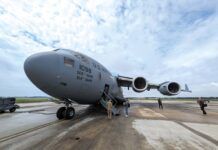To get a better understanding of the intent of the Airman Certification Standards, let’s take a closer look at the holding procedures task under the air traffic control clearances and procedures area of operation.
1. Tasks — The name of the task. The preceding letter just indicates multiple tasks within an Area of Operation. In this case, this is task B, the second task.
2. References — pretty straight forward.
3. Objective — Why an applicant is being tested on this material.
4. Knowledge — New to the ACS, the knowledge section is like a PTS for the knowledge test.
5. Skills — This section lists what must be demonstrated during a practical test.
6. Risk Management — New to the ACS, this section sets the standards for risk management.
7. ACS Coding — Coding is how everything within the ACS is going to be coordinated. Although, complicated looking, it is actually pretty straight forward.
IR = Instrument Rating
III = Third Area of Operation.
B = Task B.
K2 = Knowledge Standard two
When it comes to check-ride day, the examiner will be checking all of the sections within each task in the ACS. The prospective pilot must be ready to answer questions from the knowledge section, perform the maneuvers in the skill section and discuss risk management. Welcome to the Airman Certification Standards.




